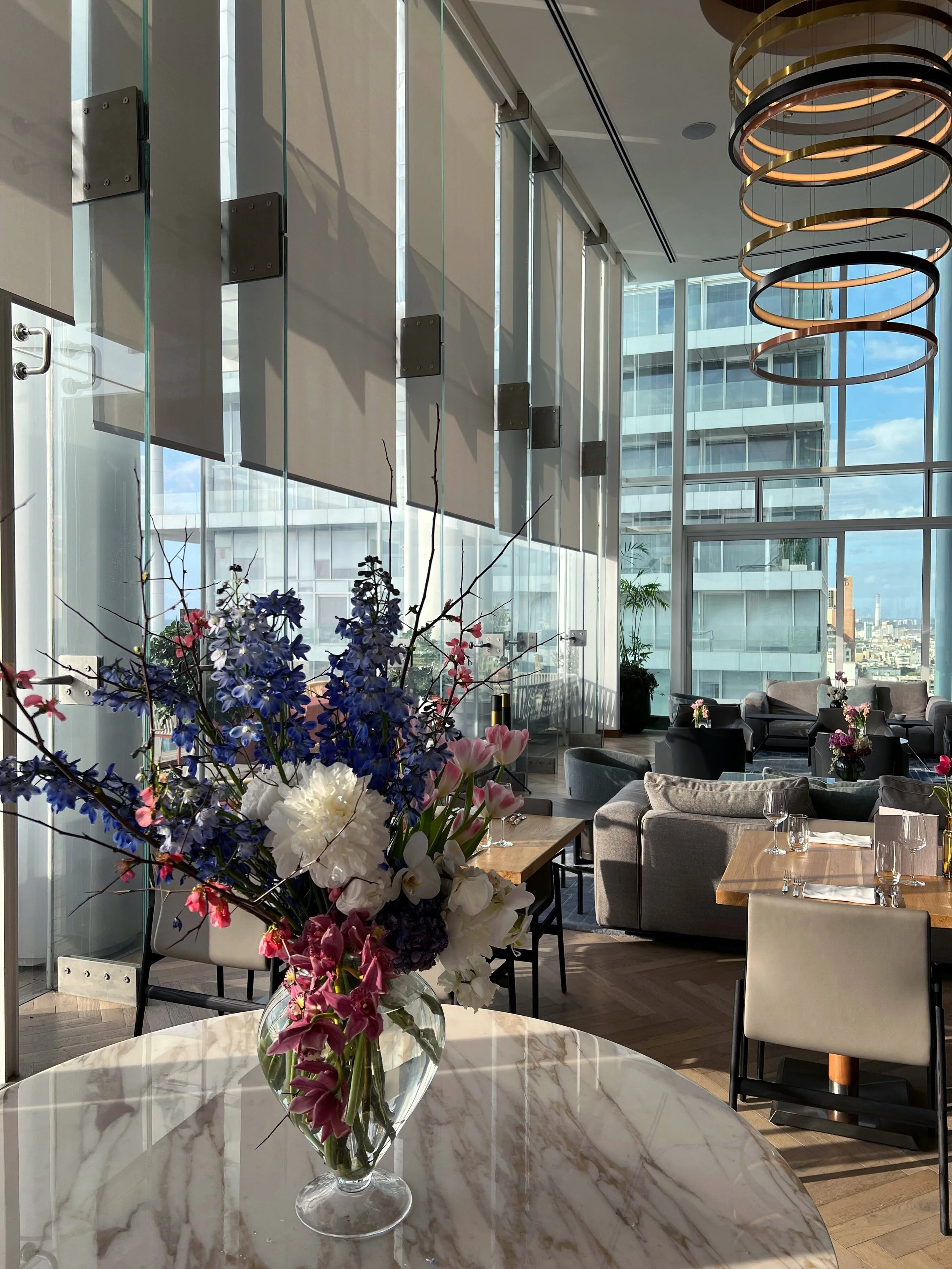The Judean Desert – the Land of Monasteries You Can Still Visit
/“The Desert of the Holy City” is a book written by Yizhar Hirschfeld, an archaeologist who studied the Byzantine period in the Judean Desert. This name describes the Judean Desert best – so close and yet so far from Jerusalem, the holy city. The caves in the rock served as retreats, the water springs were used for drinking, the proximity to the holy city of Jerusalem and the isolated desert constituted a perfect location for those seeking seclusion.
The first monastery in the Judean Desert was built by Chariton. Chariton was a member of a noble family who left his home after the persecution of Christians in the 3rd century, and made a pilgrimage to Jerusalem in order to “imitate the way of life of Elijah and John the Baptist in the desert.” When he was near Jerusalem he fell into the hands of bandits who led him to their cave and left him bound in it. According to the story, he miraculously survived and built the first “Laura” monastery in the place of the robber’s cave. A Laura is a monastery where members of the community live in seclusion in caves in the area. The caves were connected by narrow paths through them the monks would meet occasionally.
Chariton was the first to grant his disciples laws and regulations concerning the monastic lifestyle. He ordered them to make do with one meal at the end of the day, which included only bread, salt and water. He set a schedule of seven fixed prayer times. He instructed the reclusive monks to do some work, such as basket weaving or string weaving, while constantly memorizing psalms. One of the most important regulations was related to hospitality and charity, setting a social involvement unique to the Judean Desert monks.
In his lifetime, Chariton ended up establishing 2 more Laura monasteries in the desert, each became successful and full of monks.
He began a Monasticism movement, which at the height of its power, 200 years later, had over 50 monasteries, and 10,000 monks. From the fifth century onward the Judean Desert became one of the most important centers of monasticism in the Byzantine Empire.
One of the most prominent fathers of the Judean Desert Monasticism, after Chariton, was Euthymius, often called “St Euthymius the Great”, who arrived in the area as a young priest, and founded several monasteries here. He came to the Holy Land as a Christian pilgrim, and then moved to the Laura of Faran, which was directed by the monk Chariton. There he became acquainted with his friend Theoctistus and with him he went down every year into the desert. They began a new tradition of long desert journeys. The monks began to descend into the desert for a fast of forty days before Easter. This practice had a far-reaching influence on the movement of the monasticism. The two founded the first cooperative monastery (Cenobitic monastery) in the Judean Desert, Theoctistus Monastery. After the monastery was established, Euthymius descended to Masada and lived for a while on its peak in solitude. From there he turned to the edge of the Zif desert and established another monastery, which had an affinity with the villagers. He then returned to the desert to establish his third and most important monastery: the Laura bearing his name.
This was the first monastery in which many monks were appointed to high positions in the Church of the Holy Land. The monastery was not far from Jerusalem, and the monks were integrated into the city’s leadership. From this point on, the desert monks become involved in the life of the Church in general and the Jerusalem Church in particular. Until then it was a spontaneous movement of people who wished to leave the society and maintain a life of seclusion in the desert. From now on, it should be seen as an organized and substantial movement that gained prominence both in the eyes of the religious and secular authorities.
Many of Euthymius disciples founded monasteries of their own and filled senior posts in the Land of Israel Church in the Byzantine period. The most famous of these disciples were Martyrius, who established the monastery that bears his name located in the center of the present-day city of Ma’ale Adummim, and the monk Elias, who founded a monastery in Jericho.
The Monasticism movement faded with the end of Christian rule in the land.
Most monasteries were destroyed by the Persian invasion and the Arab conquest in the 7th century. Later, during the crusades, some of them were rebuilt and then destroyed again by the Arabs ruling the land, and again reconstructed by the church (mostly by the Russian Church) in the 19th century.
You can visit the still-active monasteries listed below:
Faran Monastery, the 1st monastery established in the Judean Desert, by Chariton around 330 CE. The monastery was built in Wadi Kelt, near the spring of Ein Farah. It was destroyed by the Persians in 614 CE, but was rebuilt at the end of the 19th century by the Russian Orthodox Church, and remains of the Byzantine monastery can be seen.
Marsaba Monastery is the most impressive one, Built on a cliff on the slope of the Kidron Valley in the northern Judean Desert. It is a Greek Orthodox monastery that houses 15 monks. The monastery was founded by Sabbas the Sanctified in the year 483. It is considered to be one of the oldest inhabited monasteries in the world, and still maintains many of its ancient traditions. One in particular is the restriction on women entering the main compound.
St. George Monastery is also a Greek Orthodox monastery. The cliff-hanging complex, first established around AD 500, with its ancient chapel and gardens, is active and inhabited by Greek Orthodox monks. It is reached by a pedestrian bridge across Wadi Qelt, which many believe to be Psalm 23’s “valley of the shadow of death”. The ancient cave on which the church was built, was where according to Christian tradition, Elijah lived in while fleeing from Isabel, where he was fed by bread and water brought to him by the crows. In addition, Christians believe that in this cave an angel told Joachim, the grandfather of Jesus, that his wife Hannah would bear the Virgin Mary.
Deir Hajla is a Greek Orthodox monastery also known as The Monastery of St Gerasimus. Its origins are vague, but it was probably founded in the third quarter of the fifth century and was first named “Kalamon”, after the reeds which grew in the nearby spring. According to an old tradition, the monastery was built where Mary, Joseph and the infant Jesus took shelter in a cave while fleeing from Herod the Great. The lion depicted in icons of Gerasimus comes from a story that he found the animal wandering in the desert, suffering from a thorn embedded in a paw. The saint gently removed the thorn and tended to the wound. The lion thereafter devoted himself to Gerasimus, serving him and the monastery and retrieving the monastery’s donkey when it was stolen by thieves. The story has it that when Gerasimus died in 475 the lion lay on his grave and died of grief. Today the monastery is managed by the Greek-Orthodox monk “Abuna Christo”, and is known also for its unique mosaics workshop.
Soon, we will be able to visit some more monasteries in the area of Qasr al-Yahud baptism site. About 50 years ago, the “Land of the Monasteries” in the plains of Jericho was declared a closed military zone, and since then, no one could visit it. Until 1967 the area was ruled by Jordan, and enjoyed a lively movement of pilgrims and tourists. After the Six-Day War, it became the focus of security tension, and the land of the monasteries became the land of pursuit. Seven monasteries remained closed, surrounded by fences and trapped in landmines against man and tanks and other explosives.
In the last 3 years an initiative to clear all the landmines have taken place, led by the Ministry of Defense, the Halo Foundation, and 4CI – clearing the mines from 3 monasteries in the area. The intention is to clean up the remaining 4, to return the territories to the various churches and open them to tourists. So far, 200 dunams have been cleared out of about 1,000, and the project is supposed to be completed by the end of 2019.
Photo of the Monastery of St George in Wadi Qelt – taken by Dr. Avishai Teicher / PikiWiki Israel









